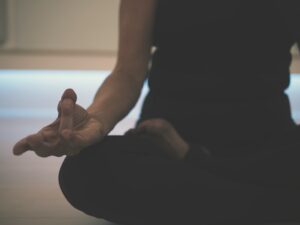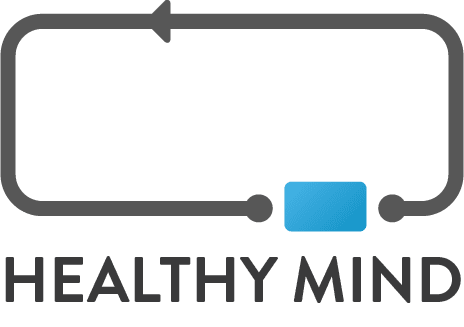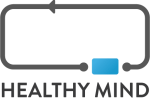How cardiac coherence can relax us?
Today there are many YouTube videos and free applications to help you practice cardiac coherence. Indeed, this relaxation procedure seduces as much by its simplicity as by its instant effectiveness. Based on breathing, cardiac coherence would help adults and children to relax, concentrate or sleep better. But for this anti-stress procedure to effectively put away insomnia, hypersensitivity or chronic fatigue, it requires daily practice. Therefore, how to relax thanks to cardiac coherence?
The cardiac coherence’s benefits
How does cardiac coherence work?
Cardiac coherence, which facilitates better stress and anxiety management, is based on a physiological breathing mechanism.
Indeed, a non spontaneous and unnatural breathing has a direct impact on the heart rate and the body’s hormones. It leads in particular to :
- A slowing down of the heart rate and heartbeats, which accelerate during emotional shocks (stress, anger…).
- Hormonal regulation (adrenaline, serotonin, endorphins…). Indeed, the body secretes different hormones all day long.
Through this breathing procedure, the heart synchronizes itself with the breathing frequency. This is why we can speak about cardiac “coherence”. In other words, cardiac coherence leads to physical and emotional harmonization: it helps to restore a physiological balance between the heart, the brain and the body.
What are the benefits of cardiac coherence?
Cardiac coherence has short- and medium-term benefits. By acting simultaneously on the heartbeat and hormonal regulation, cardiac coherence has immediate positive effects on the body and mind. First of all, cardiac coherence instantly relaxes and soothes the practitioner.
In the medium to long term, cardiac coherence has other benefits:
- Better stress and anxiety management;
- Emotional rebalancing;
- Immune system reinforcement;
- Reduction of sleep disorders, risk of depression and burn-out;
- Reduction of high blood pressure;
- Regain of tonus and energy, and reduction of chronic fatigue;
- Improvement of concentration and memorization capacities;
- Increased life expectancy.

Putting cardiac coherence into practice
How to practice cardiac coherence to relax?
Breathing exercises allow you to practice cardiac coherence, and more precisely inhalations and exhalations with your mouth.
To practice cardiac coherence effectively, we advise you to sit comfortably in a quiet place, in a sitting or standing position, with your back straight and your feet flat on the floor. Cardiac coherence can also be combined with yoga or meditation, which are part of Cognitive Behavioural Therapy (CBT), as well as hypnosis, sophrology or qi gong.
To help you practice cardiac coherence on a daily basis, there are many tutorials, videos and applications of cardiac coherence. Some therapists such as sophrologists, can also accompany you in your process.
What kind of breathing for cardiac coherence?
There is a process to help you relax in just a few minutes. This process called “365” is based on three principles:
- 3 times a day;
- 6 breaths a minute ;
- 5 minutes.
To do this, you simply breathe in deeply for 5 seconds and then breathe out for 5 seconds, continuously and without blocking your breathing. This process should be repeated 6 times in a row. This breathing frequency makes the heart in coherence in an optimal way.
To make your breathing abdominal, imagine a balloon in your stomach. When you inhale, the balloon inflates; on the contrary, when you exhale, the balloon deflates.
When to do cardiac coherence?
Ideally, cardiac coherence breathing and relaxation exercises should be done three times a day. The best times are during the following transition phases:
- In the morning upon waking up, when the body secretes cortisol (stress hormone). Cardiac coherence helps to regulate this hormonal level.
- The end of the morning, just before breakfast. Cardiac coherence allows a refocusing, while preparing the body for a good digestion.
- Late afternoon, before the beginning of the evening: at this time, the body secretes dehydroepiandrosterone (DHEA), the hormone for memory and recovery. By stimulating this hormone, cardiac coherence relaxes the body and prepares the body for a restorative night.
Good to know: 5 minutes of cardiac coherence practice induces 5 hours of benefits on the body. This is why it is not necessary to repeat the cardiac coherence exercise more than 3 times a day.

©Healthy Mind
Why associate cardiac coherence and virtual reality?
To efficiently relax in a stressful environment
We all know that work environment can be a source of stress and anxiety. Responsibilities, emergencies, hierarchical pressure, over-solicitation… The stress factors are numerous. This is particularly the case in the medical and hospital environment. The nursing staff (doctors, nurses, anaesthetists, surgeons…) has to face an important flow of patients, especially since the beginning of the Covid-19 health crisis. As for the patients, some of them are particularly anxious before an operation or a painful surgery.
Therefore, cardiac coherence can be a quick and efficient procedure to relax both health care staff and patients. But how can we take the time to relax in such an environment? Or when we are suddenly subjected to an emotional upheaval? Since it is not always possible to isolate oneself and practice breathing exercises, Healthy Mind has developed virtual reality headsets to help you do so.
Tools adapted to different types of users
Originally developed for hospitalized patients, these virtual tools can also be used by health care staff in the medical environment, as well as by company employees from every sector of activity.
Indeed, Healthy Mind’s therapeutic virtual reality headsets have positive effects on these different types of users:
- Hospitalized patients: a deep relaxation before, during or after an operation or an anxiety-provoking and painful intervention.
- Health care staff: quick relaxation between two operations, or an energy boost during night shifts.
- Company employees: refocusing during breaks, and better prevention of psychosocial risks (PSR) such as burn-out or depression.
Concretely, the user simply has to place the Healthy Mind headset on his head to benefit from a relaxing virtual 3D-immersion, whatever his position (sitting, lying on his back, on his stomach or on his side).
Cardiac coherence combined with other relaxing principles
From then on, virtual immersion asks the user to perform cardiac coherence exercises, which instantly slow down his heart rate. For example, the user has to synchronize his breathing on a blue light circle, which increases and decreases intermittently.
In addition, cardiac coherence is combined with other relaxing principles such as:
- soothing worlds and realistic images (high graphic quality) ;
- zen music;
- a verbal accompaniment (hypnosis).
Thus, all these hypnotic and soothing principles promote the user’s relaxation. Moreover, the user can isolate himself or herself easily and quickly from his or her external environment.
Reduction of stress, blood pressure and difficulties falling asleep, hormonal and emotional regulation… The benefits of cardiac coherence are numerous. While breathing exercises are easy to practice at the office, on public transport or in a queue, this is not the case in a stressful environment. This is why Healthy Mind has developed therapeutic virtual reality headsets, which immerse users in a relaxing virtual world. Breathing exercises combined with other hypnotic principles instantly reduce the users’ stress and anxiety. In fact, Healthy Mind headsets are already used by patients and health care staff in hospital.







